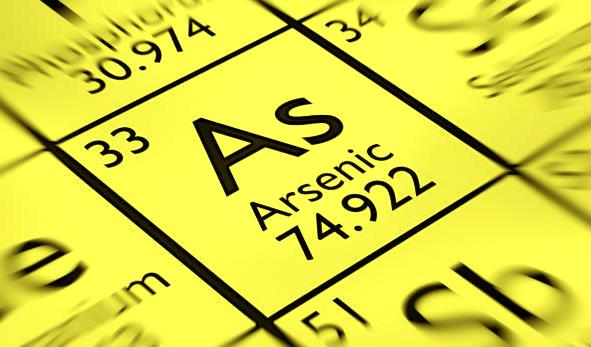
Arsenic contaminated water has caused a major health havoc across several villages and towns located in the Indo-Gangetic plains and although there is neither much awareness nor many state sponsored initiatives to provide non-arsenic contaminated water to citizens in these areas, the menace is quite serious and deserves immediate attention.
It is easy to understand the gravity of the issue by the fact that across many villages in the Indo-Gangetic plains we have families where women have been left widowed and children have lost their fathers as they died from drinking arsenic contaminated water.
From causing severe lesions on hands and body parts that often come in contact with the arsenic contaminated water of the region to causing adverse implications on internal organs of the body to even leading to death- the region’s high arsenic concentrated water has indeed erected itself as a major health concern in this region.
Research and detailed studies on the theme suggest that the problem of arsenic contaminated water in the Gangetic plains is such a big concern in India that in the last three decades over one million people have died due to its consumption.
Arsenic as an element is found naturally in groundwater especially in the Gangetic basin but the problem is definitely increased and the concentration of arsenic is enhanced multiple times by industrial and mining activities adjacent to the river bodies. Arsenic contamination is such a big issue in India that it affects an approximate of 50 million people alone in India as well as in different neighbouring countries like Bangladesh and Nepal among others.
What is particularly alarming is the problem that arsenic levels have crossed more than 300 times than what is prescribed by the WHO.
An agricultural menace is also associated with the fact that apart from being a threat for consumption, arsenic contaminated water also enters irrigation channels and affects growing crops and other agricultural produce. The situation is worsened by the excessive extraction of the groundwater.
The biggest problem of arsenic contaminated water and its consumption is felt the most in states like Uttar Pradesh, West Bengal and Bihar. These states are the most affected by arsenic contaminated groundwater and as a result people in these areas and most importantly those living in rural areas become vulnerable to skin lesions, ailments and diseases of the kidney, liver and heart accompanied by neurological disorders and cancers.
These areas have also been reported a high degree of cancer cases and stillbirth and complications among pregnant women are also being frequently seen in these regions owing to the consumption of water having high degrees of arsenic contamination.
Since a large section of the population in these states continues to be directly dependent on ground water coming from pipes and hand pumps, they become more vulnerable to the consumption of high degrees of arsenic contaminated water over time.
Since ground water containing high degrees of arsenic has been a common practice in this region skin lesions or ulcers being seen on the body due to its sustained consumption no longer make people seek medical advice or get themselves examined as a result bodily complications become even more difficult to treat as they stay on in the body for longer periods of time and take much longer to heal.
Cancer and non-healing ulcers have been a major problem among more than 48% patients of arsenic concentrated water consumption.
The first time that it was noticed that there are high levels of arsenic concentration in the ground water of the Ganga plains, it was in West Bengal in 1980s but although the government’s attention was directed towards it and it was projected as a major health hazard, nothing concrete was done to address the problem even in the subsequent years. The intervention of several non-governmental bodies and civil society organisations has led to the generation of awareness about the problem and has warned people of health conditions that they shouldn’t ignore, the truth is that with the lack of governmental attention, the rural belts of the region have been left with no option but to keep consuming and using the water contaminated with arsenic.
Ground reports on the implications of arsenic consumption in states like Bihar have also ben ample with evidence of the fact that a large chunk of the population in rural areas continues to suffer from skin conditions, ulcers, gastric and intestinal problems and diseases of the lungs and liver.
The National Health Profile 2019, clearly shows us that 11 districts in Bihar, 17 in Uttar Pradesh and 9 in West Bengal have reported high levels of arsenic contamination in water. But another parallel study conducted by the Inner Voice Foundation would have us believe in a picture that is far more worse and grave with 22 districts in Uttar Pradesh, 15 districts in Bihar and 10 districts of West Bengal having exceedingly high concentrations of arsenic in their waters.
Uttar Pradesh’s Ballia district, Bhojpur and Buxar of Bihar and Murshidabad in West Bengal recorded the highest arsenic concentration in these states.
We have ample research at hand to show that arsenic contamination has both short term and long term consequences and if India’s people don’t get an effective answer to the crisis, it may not be long before many many more people become neurologically and physiologically affected as cardiovascular problems, diabetes, respiratory and gastrointestinal disease etc according to research by WHO.
Women and children are among the worst hit sections of the population when it comes to the effects of arsenic pollution.
With their bodies already vulnerable and their bodies developing, their internal organs are deeply impacted and their physical and psychological growth stands impacted. Moreover, arsenic contaminated water has also been found to be a curse for pregnant women as it multiplies the risk of complications in birth and increases chances of miscarriage and stillbirth.
While a large number of non-governmental organisations and civil society bodies have told us time and again that the crisis is indeed grave, the authorities and the governments have retained a largely aloof and apathetic attitude and failed to replace contaminated water with clean water bodies for the people in the affected states.
From providing clean tapped water from rivers for drinking rather than water from the hand pumps and tube-wells to conducting large scale testing of water sources to working on levels of awareness at the level of the community- there are a large number of steps that can be taken to tackle the issue but the problem is, are we ready and will the government and concerned authorities put an end to their apathy and take things into their hands?












